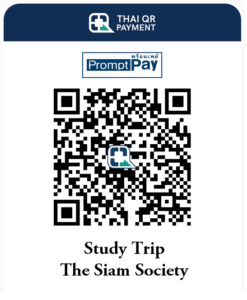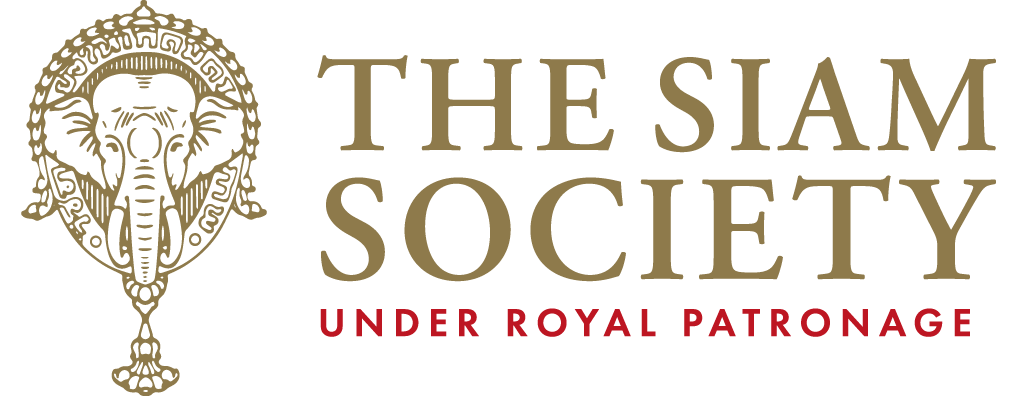A Visit to Champasak, Wat Phu, Wat Oum Muang, Li Pee Falls, Khone Phapheng Falls, and Boloven Plateau.
Laos Less Travelled: Champasak and Beyond
Champasak. This province, whose capital Pakse, lies 300 m above sea level, has had a turbulent history. From the 10th to the 13th century, it was the northernmost province of the Khmer empire of Angkor. After the fall of Angkor, the empire of Lan Chang extended its sovereignty to include this region during the 15th century. After that, the kingdom of Champasak regained its independence around the beginning of the 18th century. More recently, during the 1960s and 1970s, Champasak played a role in Laotian politics, when Prince Boun Oum, opted for cooperation with Thailand and the USA. The agricultural town of Champasak stretches along the right bank of the Mekong for about 4 km. It is a relaxed town and a good base from which to explore Wat Phu and the surrounding area.
Pakse. The name Pakse means the mouth of the river Se. It is the second largest town in Laos. The town lies in an enchanting mountain landscape on the Mekong, surrounded by fertile rice fields. The most important Champasak cultural landscape is the Wat Phu Temple complex and several archeological ruins around Wat Phu.
The fertile highlands of the Boloven Plateau have an area of about 10,000 sq km. at an altitude of about 1,200 m. The highest mountain, Phiamay, reaches 1,716 m. The climate is pleasant all year round, favoring the cultivation of coffee, tea, cardamom and vegetables. The plateau is inhabited by minorities Lao Theung and Lao Soung peoples. The French identified the Boloven, in the northeast of Champasak Province, as a prime location for settlement by hardy French farming stock. The area badly suffered during the war years when the major surrounding towns were completely destroyed by US bombing campaigns. There are numerous villages dotted between the small settlement of Tha Teng and Salavan. Today, these are a particularly popular tourist destination.
Wat Phu on the Phu Pasak, a hill about 70 m high, can be seen as spring bubbles coming out of the ground. The combination of hills and water was, from the very earliest times, considered sacred. We learn from Chinese sources that the Chen La, who were the forerunners of the Khmer, occupied the hill from the 6th century onward and built shrines to the water spirits and mountain gods. In the 6th – 7th centuries, a temple in the form of the lingam stood on the rocks. The town at the foot of the hill and the temple on its summit formed a single entity, which has been retained in the later buildings that have survived.
Wat Phu was built as a shrine to Shiva by King Jayavarman IV in the 10th century, in the style of Koh Ker (921 – 944 AD). It is thought to have been linked with Angkor by a road, a distance of about 100 km. The temple complex is surrounded at a distance by an outer wall and consists of a hilltop shine and the temples at the foot of the hill, which are connected by a staircase. In the plains, irrigated rice fields stretch along the Mekong. At the foot of the hill, the ruins of two temples have been preserved. The view from the hill temple over the Mekong valley is magnificent. There are a few more ruins and small museums in the area.
When
Leader
Khun Euayporn Kerdchouay, Senior Consultant of The Siam Society
Booking
Or contact Khun Supanut
supanut@thesiamsociety.org
The tentative programme will be as follows:
| Day 1: Friday 11 November: Bangkok – Ubon Ratchathani – Pakse | |
| 06:00 | Meet at Bangkok Don Mueang Airport, check-in at the Thai Lion Air counter. |
| 07:55 | Depart Bangkok (Don Mueang) for Ubon Ratchathani province by Thai Lion Air flight SL620 |
| 08:55 | Arrive at Ubon Ratchathani Airport; transfer to Thai-Laos border (Chong Mek/ Vang Tao) by van. After clearing Thai & Laos immigration, continue to drive to Pakse. |
| Noon: | Lunch at a local restaurant in Pakse. |
| Afternoon: | Proceed to visit Wat Phu and the ruins in the area (A pre-Angkorian Khmer temple and UNESCO World Heritage site). |
| Evening | Check-in at a Hotel Champasak Grand |
| – | Dinner at a local restaurant |
| Day 2: Saturday 12 November: Pakse – Li pee – Khone Phapheng Falls – Pakse | |
| – | Breakfast at the hotel |
| Morning: | Proceed to Ban Nakasang by van and by local boat to visit Done Det and Khone Islands (At Ban Khone, the biggest island in southern Laos and home to interesting fishing villages and a handful of dilapidated French colonial houses, the sites of the only railway in Laos, built at the end of the 19th century.) |
| Noon: | Lunch at a local restaurant. |
| Afternoon: | Transfer back to Ban Nakasang by local boat and take a bus further to Khone Phapheng Falls. The largest waterfall in Southeast Asia where the endpoint of the border between Laos and Cambodia. Afterwards, drive back to Pakse. |
| Evening:
– |
Dinner at a local restaurant.
Overnight at Hotel Champasak Grand. |
| Day 3: Sunday, 13 November: Pakse – Boloven Plateau – Ubon Ratchathani – Bangkok | |
| – | Breakfast at the hotel and check out. |
| Morning: | Proceed eastward to Boloven Plateau, famous for its fertile ground of coffee and tea plantations, waterfalls and various ethnic minorities.
Visit some beautiful waterfalls, such as Tad E Tu, Tad Pha Suam and the village in the surrounding area. |
| Noon: | Lunch at a local restaurant. |
| Afternoon: | Proceed to the Thai-Laos border (Chong Mek/ Vang Tao) and continue driving to
Ubon Ratchathani Airport. |
| 19:00 | Depart Ubon Ratchathani Airport for Bangkok by Nok Air flight DD329. |
| 20:00 | Arrive at Bangkok Don Mueang International Airport. |
| The Siam Society reserves the right to change the programme as necessary. | |
Booking
Important notes:
Contribution of THB 28,600 (THB 32,100 for non-member). Single room surcharge of THB 3,500. A photocopy of the identification page on your passport must accompany the booking. Your reservation will be confirmed as soon as the payment has been made. Payment in full will be required 30 days before the start of the trip (i.e. by Tuesday, 11 October 2022). Please pay by cash or cheque payable to “The Siam Society”. Transfer can also be made to The Siam Society travel account at TMBThanachart Bank (ttb), saving account no. 053-2-18000-7 or by scanning the QR code on your right. Once payment has been made, please fax or e-mail the deposit or transfer docket to us.

Inclusions:
- The contribution includes accommodation (twin sharing basis), air ticket, meals as mentioned in programme, transfer and sightseeing coaches, entrance fees, gratuities and other costs incurred to make this trip possible.
Exclusions:
- Visa fees (if any), personal expenses, personal food and beverage consumptions, etc.
To comply with payment and cancellation policies set forth by tour agencies and to facilitate smooth working conditions between The Siam Society and the tour agencies, please read carefully the revised cancellation policies stated below:
Cancellation charges:
| 30 days before the start of the trip: | 50% of the tour cost |
| Less than 30 days or cancellation without notice: | No refund |
For further information and bookings, please contact Khun Prasert at 02-661-6470-3 ext 504 or Khun Supanut at 02-661-6470-3 ext 506, or supanut@thesiamsociety.org. The Society’s office is open from 09:00 to 17:00, Tuesday to Saturday.
Tourist Visa Policy
Thai passport holders are not required to apply for a visa to enter Lao PDR, as well as passport holders of other ASEAN member countries.
All foreigners who are not passport holders of ASEAN member countries are required to apply for a Visa on Arrival (VOA). This can be done at Chong Mek Immigration Checkpoint. Please kindly prepare TWO photographs with a white background (2 X 2 inches) to accompany your application. The fee for a Visa on Arrival will vary between USD 30-50, depending on your nationality.
For further information and bookings, please contact Khun Prasert at Tel. 02-661-6470-3 ext. 504 or Khun Supanut Tel. 02-661-6470-3 ext. 506, Fax 02-258-3491 or email: supanut@thesiamsociety.org. The Society office is open from 09:00 to 17:00, Tuesday to Saturday.
More upcoming study trips
-
 Naadam Festival and Central Mongolia: A Cultural JourneyการศึกษาสัญจรSaturday, 4 to Monday, 13 July 2026
Naadam Festival and Central Mongolia: A Cultural JourneyการศึกษาสัญจรSaturday, 4 to Monday, 13 July 2026 -

-

-
 Sicily & Malta: A Mediterranean Journey Through History and CultureการศึกษาสัญจรTuesday, 10 to Sunday, 22 March 2026
Sicily & Malta: A Mediterranean Journey Through History and CultureการศึกษาสัญจรTuesday, 10 to Sunday, 22 March 2026 -
 A Hiking Trip to Minority Villages in Guizhou, ChinaการศึกษาสัญจรThursday, 26 February to Friday, 6 March 2026
A Hiking Trip to Minority Villages in Guizhou, ChinaการศึกษาสัญจรThursday, 26 February to Friday, 6 March 2026 -

-
 Drifting Along an Ancient Canal: Water, Plants and Ayutthaya’s Biocultural HeritageการศึกษาสัญจรSaturday, 21 February 2026
Drifting Along an Ancient Canal: Water, Plants and Ayutthaya’s Biocultural HeritageการศึกษาสัญจรSaturday, 21 February 2026 -
 A Journey through the Cultural Legacies: Phayao and Chiang Rai ProvincesการศึกษาสัญจรFriday, 6 to Sunday, 8 February 2026
A Journey through the Cultural Legacies: Phayao and Chiang Rai ProvincesการศึกษาสัญจรFriday, 6 to Sunday, 8 February 2026 -
 Bird Watching in Laem Phak Bia Mangrove Forests, Phetchaburi ProvinceการศึกษาสัญจรSaturday, 24 to Sunday, 25 January 2026
Bird Watching in Laem Phak Bia Mangrove Forests, Phetchaburi ProvinceการศึกษาสัญจรSaturday, 24 to Sunday, 25 January 2026 -
 Where Mountains Meet the Stars: A Stargazing Trip to Phitsanulok ProvinceการศึกษาสัญจรWednesday, 21 to Friday, 23 January 2026
Where Mountains Meet the Stars: A Stargazing Trip to Phitsanulok ProvinceการศึกษาสัญจรWednesday, 21 to Friday, 23 January 2026 -
 Echoes Across the Mekong: Rock Art of Pha Taem and Wonders of Southern LaosการศึกษาสัญจรThursday, 15 to Sunday, 18 January 2026
Echoes Across the Mekong: Rock Art of Pha Taem and Wonders of Southern LaosการศึกษาสัญจรThursday, 15 to Sunday, 18 January 2026
